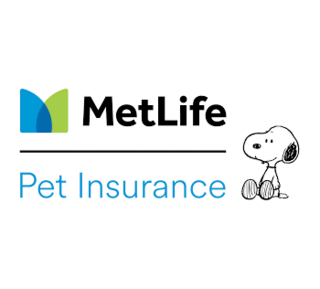Best Pet Insurance for Older Dogs
Are you considering pet insurance for your older dog? Unfortunately, since your pet’s age is one of the main factors determining your rate, a policy can be expensive if your dog is in their senior years. Plus, some companies won’t insure dogs over a certain age.
However, select insurers offer comprehensive plans with no upper age limits. Keep reading to find our top picks for senior dog pet insurance.
Money’s Main Takeaways
- ASPCA pet insurance offers the best affordable policy for older dogs.
- Both Embrace and MetLife offer the best waiting periods. Illness coverage becomes effective after 14 days, but accident coverage is active on your policy’s effective date.
- Pets Best offers coverage for prosthetic devices and wheelchairs
Why Trust Us?
We evaluated pet insurance providers based on factors that matter most to pet owners with senior dogs, including the following:
- Alternative therapies and holistic care
- Cancer treatments
- Wellness plans
- Specialists
- End-of-life services
Read more in our full methodology
Our Top Picks for the Best Pet Insurance for Senior Dogs
- ASPCA: Best Affordable Pet Insurance for Older Dogs
- Embrace: Best for Budgeting
- MetLife: Best Comprehensive Wellness Plan
- Pets Best: Best for Rehabilitation and Mobility Coverage
- Spot: Best Customizable Plan for Older Dogs
Best Pet Insurance for Older Dogs Reviews
- Affordable plan options for senior dogs
- Covers exam fees
- 30-Day money back guarantee
- Limited deductible options ranging from $100 to $500
- Alternative therapy coverage is only available on the most expensive plan
Annual coverage limit options
$2,500, $5,000, $7,000 or $10,000
Upper age limit
None
Reimbursement rates
70%, 80% or 90%
ASPCA pet health insurance offers senior dog plans that are more affordable than many other companies. Despite that, ASPCA still provides a wide range of comprehensive coverage that older pets could benefit from.
- Wellness rewards plans can help you budget preventative care
- Discounts available
- Accident coverage is available on the policy effective date
- Dogs 15 and older aren’t eligible for accident and illness plans
- Prescription medication and exam fee coverages both cost extra
Annual coverage limit options
$5,000, $8,000, $10,000, $15,000 or unlimited
Upper age limit
Eligible for an accident and illness plan until age 15; no age limit for the accident-only plan
Reimbursement rates
70%, 80% or 90%
Embrace Pet Insurance offers comprehensive pet insurance plans for older dogs with an option to add a wellness rewards plan. This plan allows pet owners to pay monthly for an allowance that can be used for routine care, so you can spread out the cost rather than paying for it all at once. Embrace also offers discounts, including a multi-pet discount and a military discount.
One downside is that Embrace doesn’t offer accident-and-illness plans to dogs aged 15 and older. However, they are still eligible for an accident-only plan.
- Wellness add-on covers a wide variety of treatments
- Accident coverage is available on the policy effective date
- Deductible may automatically decrease each year your pet doesn’t receive a claim reimbursement
- Coverage limit and reimbursement rate options are limited for dogs 12 and older
- Plans can be more expensive than some other options
Annual coverage limit options
$2,000, $5,000 or $10,000 (dogs 12 and older can only get $2,000)
Upper age limit
None
Reimbursement rates
70%, 80% or 90% (Dogs 12 and older can choose from 70% or 80%)
MetLife offers accident-and-illness and accident-only pet insurance policies with the option to add wellness coverage. The wellness plan covers more services than other companies, including vitamins and supplements, nail trimming and anal gland expression.
While MetLife has no upper age limit, dogs aged 12 and older have fewer coverage options. They are only eligible for a $2,000 annual limit, which may not be sufficient.
- Covers prosthetics and wheelchairs when prescribed by a veterinarian for accident or illness recovery
- Offers rehabilitative, acupuncture and chiropractic coverage
- Deductibles ranging from $50 to $1,000
- Limited annual coverage options to choose from
- Doesn’t cover other holistic care
Annual coverage limit options
$5,000 or unlimited
Upper age limit
None
Reimbursement rates
70%, 80% or 90%
Pets Best may be a good option for older dogs because it provides coverage if your dog suffers mobility issues. In particular, the company’s BestBenefit accident-and-illness plan will cover a prosthetic device or wheelchair if your dog’s vet prescribes one for a covered accident or illness. Most pet insurance companies don’t offer this coverage.
- Wide range of annual limits to choose from, including unlimited coverage
- Covers exam fees
- 24/7 Vet telehealth
- Charges a transaction fee unless you pay your premium annually
- Plans can be more expensive than some other options
Annual coverage limit options
$2,500, $3,000, $4,000, $5,000, $7,000, $10,000 or unlimited
Upper age limit
None
Reimbursement rates
70%, 80% or 90%
Spot pet insurance offers a lot of ways to customize your pet’s plan. You can choose from seven annual coverage limits, including an unlimited option. If you want to make your policy cheaper, you can choose a higher deductible, lower annual coverage limit and lower reimbursement rate, but remember you’ll have to pay more out of pocket.
Pet Insurance for Senior Dogs Guide
Senior dogs may benefit from pet insurance, especially if they develop a condition or injury that requires veterinary treatment. However, if you’re trying to buy pet insurance for your senior dog, you may find it more difficult — and expensive — than buying it for a puppy.
How does pet insurance work for older dogs?
Pet insurance for older dogs works the same as it does for younger pets. However, the main difference is the cost and ease of getting a policy.
Unfortunately, it can be harder to buy a policy for a senior dog because many companies impose an upper age limit, which is the oldest age your dog can be to get insurance. Additionally, a policy for an older dog will be more expensive than the same policy for a younger dog. Older dogs tend to have more veterinary care needs, making them more likely to file a claim.
Other than that, your policy will work the same. You can usually customize your policy coverage options and reimbursement rate, which is the percentage of the vet bill your insurance company will pay for.
Your policy will also have a pet insurance waiting period, which is the time you must wait from the date you purchase a policy until your coverage kicks in. Any treatment your dog needs during this period will not be covered.
If your pet needs a covered treatment after the waiting period ends, you will most likely pay for the bill out of your own pocket and submit a claim for reimbursement. However, some companies offer direct vet payments.
When is a dog considered a senior?
You may have heard the common belief that one human year equals seven dog years. However, that’s not always accurate because all breeds age differently.
The table below shows the approximate ages at which different-sized dog breeds are generally considered senior dogs, according to the American Veterinary Medical Association (AVMA). Keep in mind that this is just a general guideline, and it could differ for your pet.
Dog size
Approximate senior age
Small or toy breeds (less than 20 pounds)
8 to 11 years old
Medium-sized breeds (20 to 50 pounds)
8 to 10 years old
Large breeds (50 to 90 pounds)
8 to 9 years old
Giant breeds (more than 90 pounds)
6 to 7 years old
Types of pet insurance for older dogs
Pet insurance covers a portion of your dog’s medical treatment for accidents and illnesses, depending on your coverage. Here’s more information about the different types of policies you can choose from.
Accident and illness coverage
Accident and illness plans are the most comprehensive pet insurance policies you can purchase. Some examples include treatments for cancer, broken bones or kennel cough.
Remember that pet insurance companies don’t cover pre-existing conditions, which are any condition your pet had before getting pet insurance. However, many of the best pet insurance companies for pre-existing conditions cover curable conditions after a certain period of no treatment for that issue. Pre-existing condition rules vary by company, so be sure to check before purchasing a policy.
Accident-only coverage
Alternatively, you can purchase accident-only coverage if you don’t want coverage for illnesses. With some pet insurance companies, accident-only coverage may be the only option for senior pets. Some companies don’t allow pet owners with dogs over a certain age to purchase accident and illness coverage.
Pet wellness plans
Many companies offer wellness plans you can add to your pet insurance policy to get coverage for routine care, such as vaccines, wellness exams, routine dental cleanings and more.
How much is pet insurance for senior dogs?
Pet insurance costs vary by breed, age, location, coverage limits, company and more. A policy can be pricey for senior dogs because they are more likely to need medical care.
Based on quotes we gathered for a nine-year-old dog, the monthly cost of a policy averages about $40 to $100. The price increases if you add a wellness plan and other add-ons.
You can lower your costs by choosing a higher pet insurance deductible, lower reimbursement rate or lower annual limit.
Does pet insurance cost increase with age?
Pet insurance costs tend to increase as your dog gets older. Age is one of the main factors that determines your rate. Older dogs are more expensive to insure because they are more likely to require veterinary treatment.
How to compare pet insurance policies for older dogs
Pet insurance policies vary significantly by company. Before choosing a policy for your older dog, compare coverages and costs from multiple companies to find the best value. Look into the following factors:
- Upper age limits: Many pet insurance companies won’t insure dogs over a certain age.
- Coverage options for older dogs: Some pet insurance companies limit your options if your dog is over a certain age.
- Cost: Pet insurance can be expensive for older dogs.
- Discounts: You may qualify for pet insurance discounts to save money on your rate.
- Customization: Many companies offer different levels of policies that can be customized. This can help ensure you only pay for what you need.
- Claim process: Look into the company’s claim process to ensure it’s easy and quick.
- Waiting period: Make sure the waiting period for coverage is reasonable.
- Exclusions: Determine any exclusions to your policy, such as pre-existing or hereditary conditions.
- Pet wellness plans: If you want coverage for preventative care, look into the company’s wellness plan options and how much they cost.
Is pet insurance for senior dogs worth it?
Pet insurance for your senior dog will cover treatment for future accidents and illnesses, depending on your coverage, so it can be useful as your pet gets older. When deciding if it’s worth it for your dog, consider their current health issues and your personal preferences. Remember that any conditions your pet has already been diagnosed with may be considered pre-existing and excluded from coverage.
Since pet insurance for older dogs can be very expensive, get quotes from multiple companies to compare.
Best Pet Insurance for Older Dogs FAQs
What are the best pet insurance options for senior dogs with pre-existing conditions?
Do older dogs need insurance?
What is the cutoff age for a pet insurance policy?
Does pet insurance cover end-of-life care?
How We Chose the Best Pet Insurance for Older Dogs
To determine the best pet insurance for older dogs, we independently evaluated pet insurance companies based on the following factors:
- Upper age limits: Many pet insurance companies won’t cover dogs over a certain age.
- Policy options for older dogs: Some companies don’t offer accident and illness policies for dogs over a certain age.
- Alternative therapies and holistic care: Holistic care or alternative therapies can be beneficial for senior dogs. Some companies cover these types of treatments.
- Emergency and specialized care: Pet insurance may cover the cost of treatment if your dog needs to see a specialist or go to the emergency pet hospital.
- Cancer treatments: According to the AVMA, over half of dogs over the age of 10 will develop cancer.
- Wellness plans: To keep your dog healthy, you’ll need to bring them to their annual wellness exams. Many companies offer wellness plans you can add to your policy for an extra cost.
- End-of-life services: Some companies help cover the cost of humane euthanasia as well as burial or cremation.
Summary of Money’s Best Pet Insurance for Older Dogs
- ASPCA: Best Affordable Pet Insurance for Older Dogs
- Embrace: Best for Budgeting
- MetLife: Best Comprehensive Wellness Plan
- Pets Best: Best for Rehabilitation and Mobility Coverage
- Spot: Best Customizable Plan for Older Dogs












